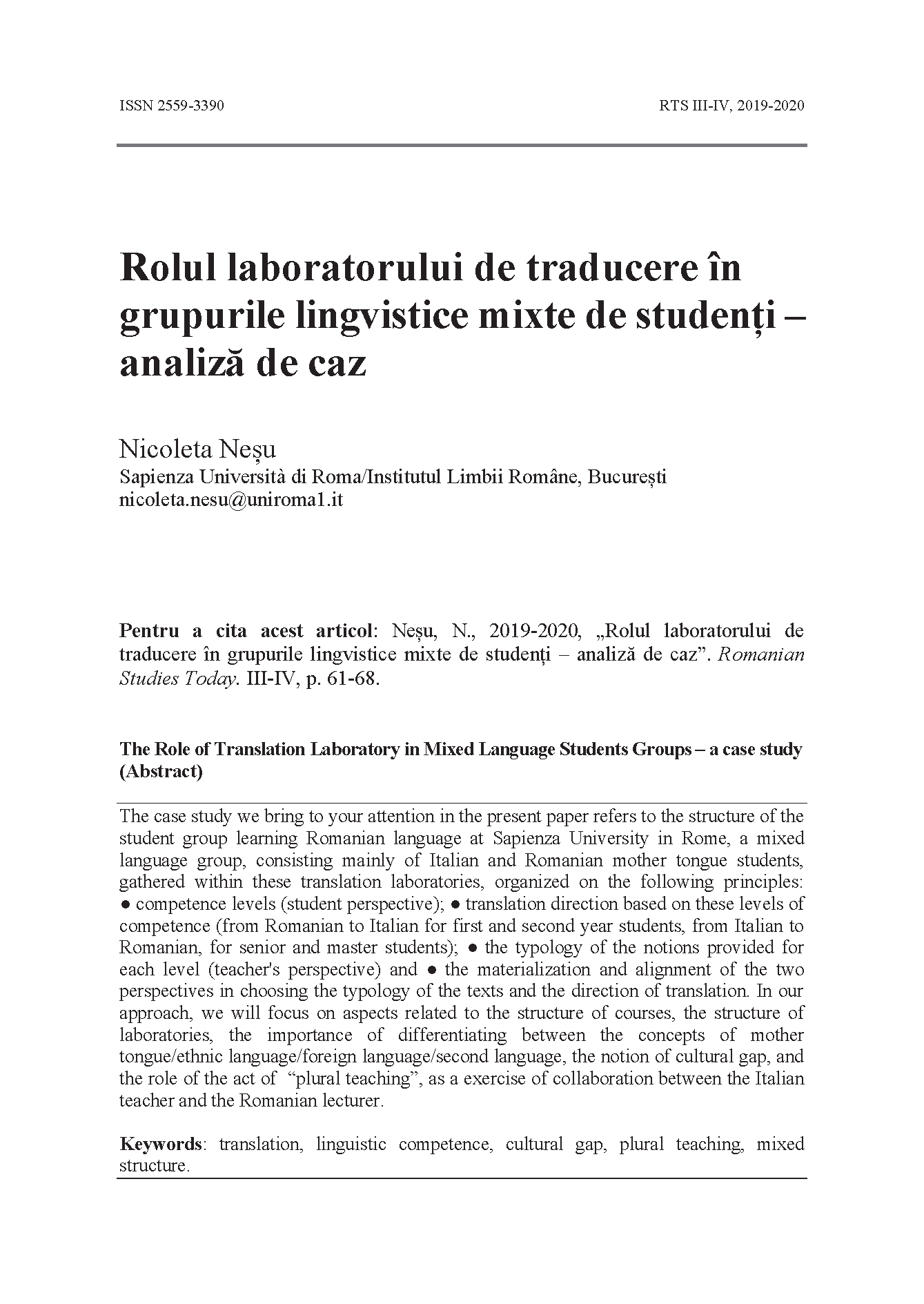Rolul laboratorului de traducere în grupurile lingvistice mixte de studenți – analiză de caz
DOI:
https://doi.org/10.62229/rst/3.4.1/7Keywords:
translation, linguistic competence, cultural gap, plural teaching, mixed structureAbstract
The case study we bring to your attention in the present paper refers to the structure of the student group learning Romanian language at Sapienza University in Rome, a mixed language group, consisting mainly of Italian and Romanian mother tongue students, gathered within these translation laboratories, organized on the following principles: competence levels (student perspective); translation direction based on these levels of competence (from Romanian to Italian for first and second year students, from Italian to Romanian, for senior and master students); the typology of the notions provided for each level (teacher's perspective) and the materialization and alignment of the two perspectives in choosing the typology of the texts and the direction of translation. In our approach, we will focus on aspects related to the structure of courses, the structure of laboratories, the importance of differentiating between the concepts of mother tongue/ethnic language/foreign language/second language, the notion of cultural gap, and the role of the act of “plural teaching”, as a exercise of collaboration between the Italian teacher and the Romanian lecturer.





